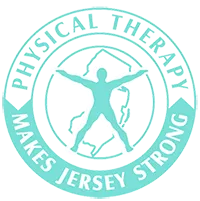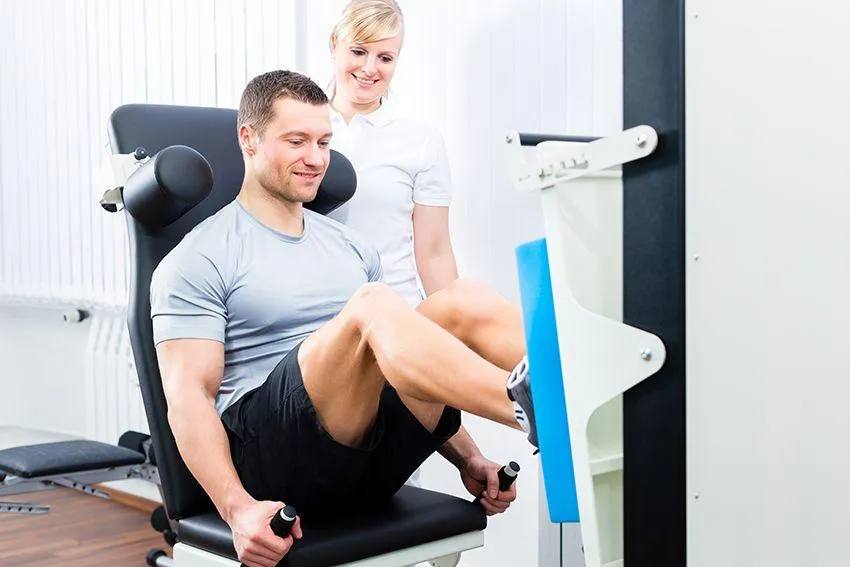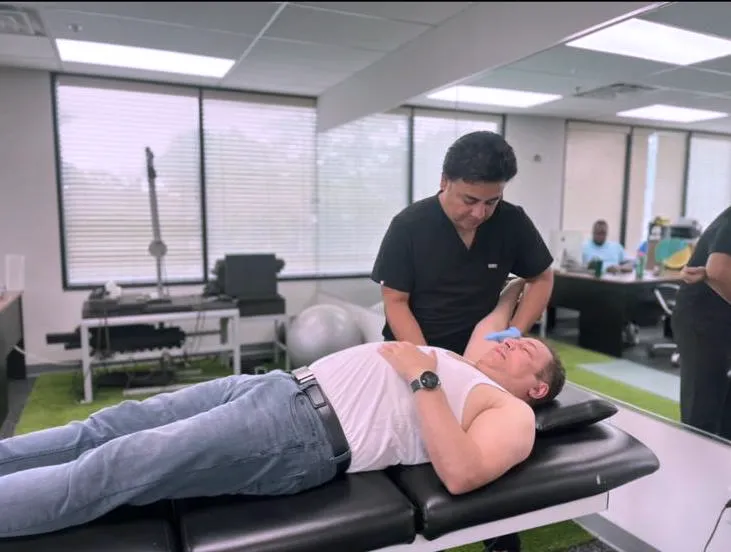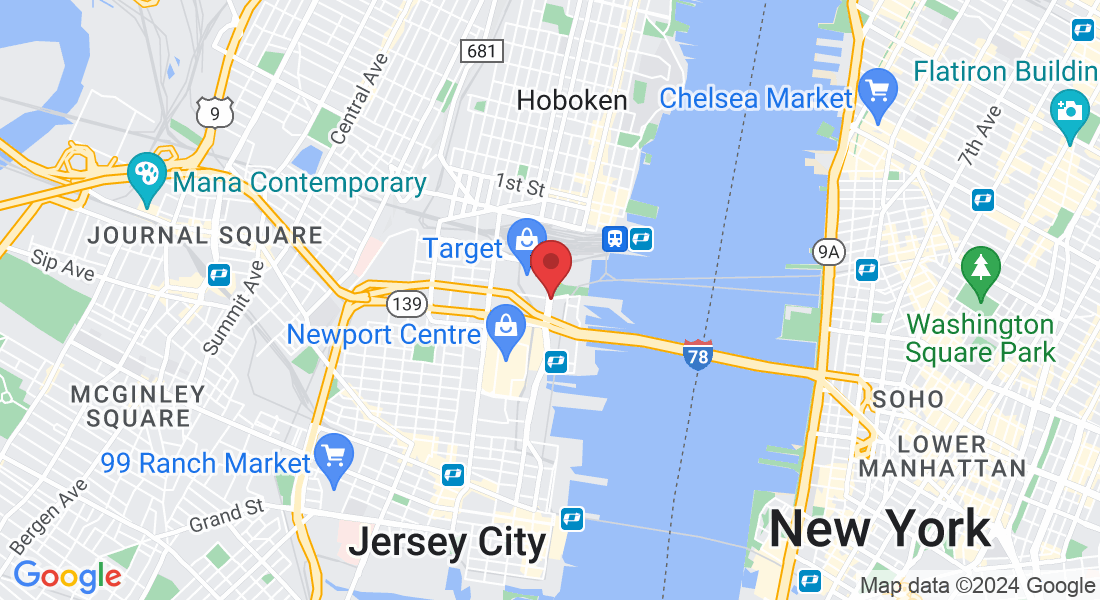New Jersey Rehab Experts
Specializing in comprehensive orthopedic care, New Jersey Rehab Experts offers a wide range of services including Physical Therapy, Sports Physical Therapy, Dry Needling, Chiropractic Care, Neuropathy Treatment, Pain Management, and Manual Therapy. Our state-of-the-art facility is staffed by board-certified therapists dedicated to delivering top-tier care, ensuring you achieve optimal recovery and wellness.
Clinic Located in Jersey City (Newport), Secaucus and Clifton
Genuine Feedback from
Our Patients
Our Affiliations






Explore Our Diverse Range of Disciplines
Discover a world of exceptional care customized for all ages! Our dedicated professionals deliver top-notch medical attention, expert rehabilitative therapy, and warm companion care for adults, seniors, and young patients. Experience personalized healthcare with a heart!

Orthopedic Physical Therapy
Specialized care for musculoskeletal injuries, surgeries, and chronic conditions affecting bones, joints, muscles, ligaments, and tendons.
- Sports injuries
- Arthritis management
- Post-surgical rehab

Geriatric Physical Therapy
Specialized care for older adults, addressing age-related changes affecting balance, strength, mobility, and independence.
- Fall prevention
- Balance training
- Mobility enhancement

Sports Physical Therapy
Specialized rehab for athletes of all levels, from weekend warriors to professionals, focusing on injury recovery and performance enhancement.
- ACL rehab
- Return-to-play testing
- Performance optimization

Vestibular Rehabilitation
Specialized therapy for dizziness, vertigo, and balance disorders stemming from inner ear and balance system dysfunction.
- BPPV treatment
- Balance retraining
- Dizziness management

Men's Health Physical Therapy
Specialized care for pelvic floor dysfunction and related issues, providing discreet, effective treatment for men's specific health needs.
- Pelvic pain relief
- Post-prostatectomy rehab
- Urinary dysfunction

Motor Vehicle & Work Injury Rehab
Specialized care for car accidents and workplace injuries, with expert documentation and coordination with insurance providers.
- Whiplash treatment
- Workers' comp cases
- Personal injury claims

Manual Therapy
Hands-on approach using specialized techniques to relieve pain, improve mobility, and accelerate healing naturally.
- Mulligan Mobilizations
- McKenzie Method
- Myofascial Release

Dry Needling
Modern technique using thin, sterile needles to target trigger points, releasing muscle tension and restoring normal function.
- Back & neck pain
- Headaches & migraines
- Sports injuries
Ready to start your recovery journey?
Our expert therapists are ready to help you live pain-free and regain your mobility.
Our Advantages
Specialized Programs for Every Need
From orthopedic rehab and sports therapy to vestibular, pelvic health, and post-injury recovery, we provide comprehensive, patient-focused solutions.
State-of-the-Art Techniques & Technology
We use cutting-edge treatments like dry needling, spinal manipulation, Mulligan & McKenzie techniques, Fit3D scans, Shockwave Therapy , Cupping and more to accelerate healing.
Personalized One-on-One Care
Every patient receives individualized treatment plans with hands-on attention to ensure faster recovery and long-term results.
Trusted by Athletes & Community Leaders
Official providers for multiple cricket teams and a member of respected healthcare associations—our reputation speaks for itself.
Multiple Convenient Locations Across NJ
With clinics in Jersey City, Secaucus, Clifton , and beyond, we’re always within reach—offering flexible scheduling and bilingual support.
Seamless Support for Injury Claims & Recovery
We coordinate care with attorneys, physicians, and insurers for patients recovering from motor vehicle or work-related injuries, ensuring smooth documentation and stress-free rehab.
Meet Our Team

Sunny Thakkar PT, MS ( Exercise Physiologist)
Physical Therapist

Ashish Sinha, PT, DPT
Physical Therapist

Dr. Rohit Farzala PT, DPT
Physical Therapist
About Us


Experience rapid rejuvenation as our specialist team harnesses the power of advanced healing tech to erase pain with ease. We dive deep into your world, assessing every piece of the puzzle—stress at work, life pressures, physical health, nutrition, genes, posture, and even emotional ties—crafting a tailor-made wellness blueprint that's as unique as you are. With our dedicated holistic touch, we don't just treat symptoms; we empower you to embrace a pain-free, harmonious life.
Ask a Question

Unlocking Relief: The Ultimate Guide to Hands Therapy for Pain-Free Living
Unlocking Relief: The Ultimate Guide to Hands Therapy for Pain-Free Living
In today’s fast-paced world, hand pain can feel like a relentless shadow, affecting everything from your daily tasks to your overall quality of life. But what if you could break free from discomfort and reclaim your freedom? Welcome to "Unlocking Relief: The Ultimate Guide to Hands Therapy for Pain-Free Living." This comprehensive guide delves into innovative therapies specifically designed to ease your pain and enhance your hand’s functionality. From targeted exercises to therapeutic techniques, we will explore how to nourish your hands back to health. Whether you're a busy professional, a passionate artist, or simply someone who wants to enjoy life without discomfort, this guide is your essential roadmap. Join us as we uncover practical strategies and insights that empower you to embrace a pain-free life. Your hands deserve it, and so do you!
Understanding Hands Therapy: An Overview
Hand therapy is a specialized form of rehabilitation focused on treating ailments and injuries of the hands and upper extremities. This therapeutic approach encompasses a wide range of treatments aimed at improving hand function and alleviating pain. Hand therapy is not limited to post-surgical rehabilitation; it also includes preventive care and management of chronic conditions. A vital aspect of this therapy is its holistic approach, which considers the intricate anatomy and functionality of the hand, wrist, and forearm.
The role of a hand therapist is multifaceted, addressing conditions through manual therapy, therapeutic exercises, and education on ergonomic practices. These skilled professionals often work closely with physicians to create tailored treatment plans that cater to the specific needs of each patient. Hand therapists are typically occupational or physical therapists with advanced training in hand and upper extremity rehabilitation. This specialized knowledge allows them to provide comprehensive care that addresses both the physical and functional aspects of hand health.
Hand therapy is essential for those experiencing hand pain, stiffness, or weakness, as it helps restore the ability to perform everyday tasks. Whether you suffer from a sports injury, repetitive strain, or a degenerative condition, hand therapy offers a pathway to recovery. By understanding the core principles and techniques of hand therapy, individuals can make informed decisions about their treatment and take proactive steps towards a pain-free life.
Common Hand Conditions Treated by Hands Therapy
Hand therapy is effective in managing a variety of conditions that affect the hands and upper extremities. One of the most common conditions treated by hand therapists is carpal tunnel syndrome, a condition caused by pressure on the median nerve in the wrist. Symptoms include numbness, tingling, and weakness in the hand, which can be debilitating if left untreated. Hand therapy for carpal tunnel syndrome often includes exercises to strengthen the muscles, splinting to support the wrist, and manual techniques to reduce nerve compression.
Another prevalent condition is arthritis, which can affect the joints in the hands, leading to pain, swelling, and reduced mobility. Hand therapists work with arthritis patients to develop exercise programs that maintain joint flexibility and strength, as well as provide education on joint protection techniques. Splinting and the use of adaptive devices can also help manage symptoms and improve hand function.
Hand therapy is also crucial for those recovering from hand injuries, such as fractures, tendon lacerations, and sprains. Post-surgical rehabilitation often involves a combination of manual therapy, exercises, and modalities such as ultrasound or electrical stimulation to promote healing and restore function. Conditions like Dupuytren's contracture, trigger finger, and De Quervain's tenosynovitis are other examples of ailments that benefit from the expertise of hand therapists. Each condition requires a tailored approach to treatment, highlighting the importance of specialized care in achieving optimal outcomes.
The Science Behind Hands Therapy
The effectiveness of hand therapy is grounded in a deep understanding of the anatomy, physiology, and biomechanics of the hand and upper extremities. The hand is a complex structure composed of bones, joints, ligaments, tendons, muscles, and nerves, all working in unison to perform intricate movements. Hand therapists apply scientific principles to assess and address dysfunctions within this system, ensuring targeted and effective treatment.
One fundamental aspect of hand therapy is neuroplasticity, the brain's ability to reorganize itself by forming new neural connections. Through repetitive, task-specific exercises, hand therapy can stimulate neuroplastic changes, helping patients regain lost function and improve coordination. This concept is particularly relevant for those recovering from neurological conditions or injuries that have affected hand function. By engaging in purposeful activities, patients can enhance motor learning and achieve sustained improvements in hand use.
Biomechanics also play a crucial role in hand therapy. Understanding the forces and motions that the hand undergoes during different activities allows therapists to design interventions that restore normal movement patterns. For example, analyzing the mechanics of grip and pinch can help identify compensatory movements that may contribute to pain or dysfunction. By addressing these issues, hand therapists can optimize hand performance and reduce the risk of further injury. This scientific foundation ensures that hand therapy is not only effective but also evidence-based, providing patients with the best possible outcomes.
Techniques Used in Hands Therapy
Hand therapy employs a variety of techniques to address different conditions and achieve specific therapeutic goals. One of the primary techniques is manual therapy, which involves hands-on manipulation of the soft tissues and joints. Techniques such as joint mobilization, soft tissue massage, and myofascial release can help reduce pain, improve mobility, and enhance tissue healing. Manual therapy is often combined with other modalities to maximize its effectiveness.
Therapeutic exercises are another cornerstone of hand therapy. These exercises are designed to improve strength, flexibility, endurance, and coordination of the hand and upper extremities. They can range from simple range-of-motion exercises to more complex, task-specific activities that simulate everyday tasks. Hand therapists may use resistance bands, putty, or other tools to challenge the muscles and promote functional improvements. The goal is to create a balanced program that addresses the patient's specific needs and progresses them towards their functional goals.
Splinting is also a common technique used in hand therapy. Splints can provide support, protect healing tissues, and improve the alignment of joints. There are different types of splints, including static splints that immobilize a joint and dynamic splints that allow controlled movement. Hand therapists are skilled in custom-making splints to ensure a proper fit and optimal therapeutic benefit. Additionally, modalities such as ultrasound, electrical stimulation, and heat or cold therapy may be used to complement other treatments. These techniques can help reduce pain, decrease inflammation, and promote tissue healing, enhancing the overall effectiveness of hand therapy.
Benefits of Hands Therapy for Pain Management
Hand therapy offers numerous benefits for pain management, making it a valuable treatment option for those suffering from hand and upper extremity conditions. One of the primary benefits is pain relief. Through targeted interventions, hand therapists can address the underlying causes of pain, such as inflammation, nerve compression, or muscle imbalances. Techniques like manual therapy, therapeutic exercises, and modalities can help reduce pain and improve comfort, allowing patients to engage in their daily activities with less discomfort.
Another significant benefit of hand therapy is improved function. Pain and dysfunction in the hands can severely impact a person's ability to perform everyday tasks, from buttoning a shirt to typing on a computer. Hand therapy aims to restore functional use of the hand, enabling patients to regain their independence and improve their quality of life. By addressing strength, flexibility, coordination, and dexterity, hand therapists help patients achieve their functional goals and return to their preferred activities.
Hand therapy also plays a crucial role in preventing further injury and promoting long-term hand health. Education on proper ergonomics, joint protection techniques, and activity modification can help patients avoid repetitive strain injuries and other issues. By empowering patients with the knowledge and skills to manage their condition, hand therapy supports sustained improvements and reduces the likelihood of future problems. This proactive approach not only enhances recovery but also contributes to overall well-being, making hand therapy an essential component of comprehensive pain management.
How to Find a Qualified Hands Therapist
Finding a qualified hand therapist is essential for receiving effective and specialized care. When searching for a hand therapist, there are several factors to consider to ensure you find a professional with the right expertise and credentials. One of the first steps is to look for a therapist who is a certified hand therapist (CHT). This certification indicates that the therapist has completed advanced training in hand therapy and has passed a rigorous examination demonstrating their knowledge and skills.
Another important consideration is the therapist's experience. Look for a therapist who has extensive experience treating conditions similar to yours. This experience can provide valuable insights and ensure that the therapist is well-versed in the latest treatment techniques and best practices. You can ask for recommendations from your primary care physician, orthopedic surgeon, or other healthcare providers to find a reputable hand therapist in your area.
It's also essential to consider the therapist's approach to care. A good hand therapist should take a patient-centered approach, working collaboratively with you to develop a personalized treatment plan. They should be able to explain the rationale behind their interventions and involve you in the decision-making process. Additionally, consider the therapist's communication skills and bedside manner. A supportive and empathetic therapist can make a significant difference in your treatment experience, helping you feel comfortable and motivated throughout your rehabilitation journey.
What to Expect During a Hands Therapy Session
A typical hand therapy session begins with an initial assessment, during which the therapist evaluates your condition and discusses your medical history, symptoms, and functional goals. This assessment may include a physical examination of the hand and upper extremities, as well as tests to measure strength, range of motion, and sensation. The therapist may also observe your hand movements during specific tasks to identify any compensatory patterns or functional limitations.
Based on the assessment findings, the therapist will develop a customized treatment plan tailored to your needs. This plan may include a combination of manual therapy, therapeutic exercises, splinting, and modalities. During the session, the therapist will guide you through these interventions, providing hands-on techniques and instructing you on exercises to perform. The therapist will also educate you on proper ergonomics, joint protection techniques, and strategies to manage your condition at home.
Throughout the course of your treatment, the therapist will monitor your progress and adjust the treatment plan as needed. Regular re-assessments will help track your improvements and ensure that the interventions are effective. The therapist will also provide ongoing support and encouragement, helping you stay motivated and committed to your rehabilitation goals. By understanding what to expect during a hand therapy session, you can approach your treatment with confidence and actively participate in your recovery process.
Hands Therapy vs. Other Treatment Options
Hand therapy is just one of several treatment options available for managing hand and upper extremity conditions. Understanding how hand therapy compares to other treatments can help you make informed decisions about your care. One common alternative to hand therapy is medication, which can help manage pain and inflammation. While medications can provide temporary relief, they do not address the underlying causes of the condition and may have side effects. Hand therapy, on the other hand, focuses on improving function and promoting long-term recovery through targeted interventions.
Surgery is another treatment option for certain hand conditions, such as severe carpal tunnel syndrome or tendon injuries. While surgery can be effective in resolving specific issues, it often requires a period of rehabilitation to restore function and strength. Hand therapy is an essential component of post-surgical recovery, helping patients regain their range of motion and achieve optimal outcomes. In many cases, hand therapy can also serve as a non-surgical alternative, providing significant improvements without the risks and recovery time associated with surgery.
Complementary therapies, such as acupuncture, chiropractic care, and massage therapy, can also be beneficial for hand conditions. These therapies can help reduce pain, improve circulation, and promote relaxation. However, they may not provide the same level of functional improvement as hand therapy. Combining hand therapy with complementary therapies can offer a comprehensive approach to treatment, addressing both the physical and holistic aspects of hand health. By considering the benefits and limitations of each treatment option, you can choose the best approach for your individual needs and goals.
Tips for Maintaining Hand Health at Home
Maintaining hand health at home is essential for preventing injuries and managing chronic conditions. One of the most important tips is to practice proper ergonomics, especially if you engage in repetitive tasks or spend long hours at a computer. Ensure that your workstation is set up to promote good posture, with your wrists in a neutral position and your hands supported. Take regular breaks to stretch and move your hands, reducing the risk of strain and fatigue.
Incorporating hand exercises into your daily routine can also help maintain strength, flexibility, and coordination. Simple exercises like finger stretches, grip strengthening, and wrist rotations can keep your hands in good condition and prevent stiffness. Using tools like stress balls, putty, or resistance bands can add variety to your exercise routine and target different muscle groups. Consistency is key, so aim to perform these exercises regularly to see the best results.
Proper hand care is another important aspect of maintaining hand health. Keep your hands clean and moisturized to prevent skin irritation and dryness. If you have arthritis or other joint conditions, consider using warm water soaks or paraffin baths to soothe your hands and improve circulation. Be mindful of activities that put stress on your hands, and use assistive devices or adaptive equipment to reduce the strain. By taking proactive steps to care for your hands, you can enjoy pain-free living and maintain your hand function for years to come.
Conclusion: Embracing a Pain-Free Life Through Hands Therapy
Hand pain can be a significant barrier to enjoying life and performing everyday tasks, but it doesn't have to define your experience. Hand therapy offers a pathway to relief, providing specialized care that addresses the root causes of pain and dysfunction. By understanding the principles and techniques of hand therapy, you can take control of your hand health and work towards a pain-free life.
From manual therapy and therapeutic exercises to splinting and modalities, hand therapy encompasses a wide range of interventions designed to improve function and reduce pain. The benefits of hand therapy extend beyond immediate relief, offering long-term solutions that enhance your quality of life. By finding a qualified hand therapist and actively participating in your treatment, you can achieve your rehabilitation goals and regain your independence.
Maintaining hand health at home is also crucial for preventing injuries and managing chronic conditions. Proper ergonomics, regular hand exercises, and mindful hand care can support your efforts to stay pain-free and functional. Embracing these strategies and incorporating them into your daily routine will help you protect your hands and enjoy the activities you love without discomfort.
In conclusion, hand therapy is an invaluable resource for anyone experiencing hand pain or dysfunction. By unlocking the benefits of hand therapy, you can reclaim your freedom and embrace a life without pain. Your hands are essential tools that deserve the best care, and with the right approach, you can ensure they remain healthy and strong for years to come.
No matter whether your condition was caused by a sport, work accident or otherwise,
we welcome the chance to serve you.
Opening Hours





